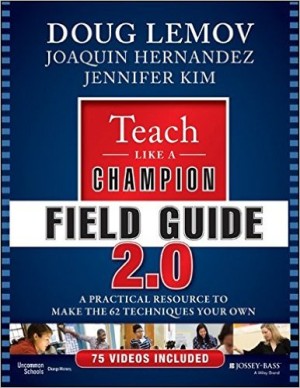06.21.16Tracking, Not Watching: A Field Guide 2.0 Excerpt
 One of the most important skills for any teacher or coach is observing during independent practice. It’s one of the keys to Checking for Understanding. Joaquin Hernandez, Jen Kim and I put some new framing on this critical topic in the 2.0 version of the Teach Like a Champion Field Guide, which comes out in September. Here’s a short excerpt.
One of the most important skills for any teacher or coach is observing during independent practice. It’s one of the keys to Checking for Understanding. Joaquin Hernandez, Jen Kim and I put some new framing on this critical topic in the 2.0 version of the Teach Like a Champion Field Guide, which comes out in September. Here’s a short excerpt.
The legendary basketball coach John Wooden offered this advice to teachers (of basketball and other things): “Never mistake activity for achievement.” A busy gym with sneakers squeaking or a classroom full of pencils scratching is evidence of activity. This is often a good thing, but different from and easier to spot than achievement—a gym or a classroom that yields students who pass and move or factor equations impeccably.
It’s easier to monitor activity levels than it is to track precisely where and how students’ mastery of a skill is starting to break down. When we engage in watching, we are often merely observing signs of productivity or completion, and whether students are following our instructions. We are mistaking activity for achievement. Because activity often occurs alongside achievement, it is also the single biggest distraction to observers. When you set out to find evidence of mastery and learning, it’s easy to get swept up by all the hard work you see students doing.
To focus on achievement, we suggest tracking two key indicators of learning: specific errors and success points.
Specific errors are the things students are most likely to struggle with in a given task. These errors
complete the phrase, “If they get it wrong, they will probably . . .” We suggest keeping about two specific errors in mind. More than that is too much to focus on with discipline, and watching for too many things isn’t always that different from watching for nothing in particular.
Success points are the one or two things that most readily distinguish excellence at the task from mere completion of it. They answer the question, “What would ‘great’ look like?”
Thinking of specific errors and success points in advance and looking for them as you observe can change the game. It’s a simple task, but it helps you see differently.
